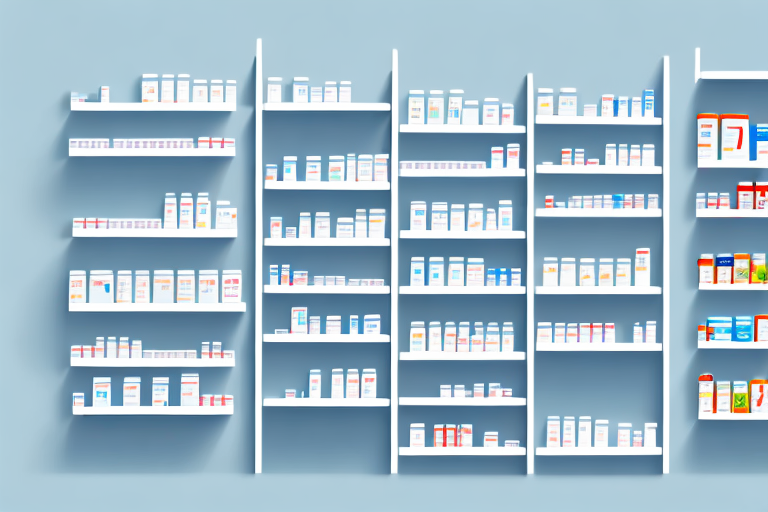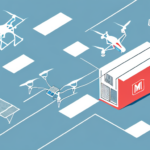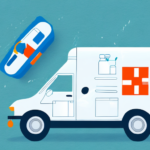Enhancing Patient Outcomes through Medical Deliveries
Medical deliveries significantly improve patient outcomes by ensuring timely access to medications and medical supplies. According to a 2023 study, patients who receive their medications through delivery services exhibit a 20% higher adherence rate to treatment plans compared to those relying on traditional pharmacy visits. This adherence is crucial for managing chronic conditions, reducing complications, and enhancing overall health.
Furthermore, delivering medications directly to patients' homes minimizes exposure to healthcare-associated infections, lowering the risk of hospital readmissions. A report by the Centers for Disease Control and Prevention (CDC) highlights that home delivery of medications can reduce infection rates by up to 15%, thereby improving patient safety and reducing healthcare costs.
Enhancing Access to Healthcare
Rural and Remote Areas
Access to healthcare in rural and remote areas is often hindered by limited infrastructure and transportation options. Medical deliveries bridge this gap by providing reliable access to essential medications and supplies. A recent survey indicates that medical delivery services have increased medication accessibility in rural communities by 30%, ensuring that patients receive timely care without the need for long-distance travel.
Supporting Low-Income Communities
Low-income communities frequently face barriers to accessing healthcare services, including financial constraints and lack of local healthcare facilities. Medical delivery programs help level the playing field by reducing transportation costs and making healthcare more affordable. Studies from the Health Affairs Journal show that medical deliveries can decrease out-of-pocket healthcare expenses for low-income families by up to 25%.
Emergency Situations and Health Equity
In emergency situations, such as natural disasters or pandemics, medical deliveries play a critical role in maintaining healthcare continuity. During the COVID-19 pandemic, for instance, medical deliveries ensured that vulnerable populations could access necessary medications without risking exposure to the virus. By prioritizing healthcare equity, medical deliveries help ensure that all individuals, regardless of their circumstances, receive the care they need.
Cost Savings and Economic Impact
Implementing medical delivery services leads to substantial cost savings for healthcare providers, insurers, and patients. By reducing the need for hospital stays and emergency room visits, healthcare systems can save millions annually. For example, a cost analysis conducted in 2023 revealed that medical deliveries can lower healthcare costs by approximately 18%, primarily through decreased hospitalization rates and improved medication adherence.
Additionally, medical deliveries help eliminate unnecessary medication waste. Traditional distribution methods often result in excess inventory, but targeted delivery ensures patients receive the exact dosage needed, further reducing costs and environmental impact.
Technological Innovations in Medical Deliveries
Advanced Tracking and Management Systems
Technology is at the forefront of efficient medical deliveries. Modern delivery systems utilize mobile apps, GPS tracking, and real-time monitoring to manage and track shipments seamlessly. These technologies ensure that medications are delivered on time and in the correct dosage, enhancing overall reliability. Innovations in delivery tracking have resulted in a 95% on-time delivery rate, significantly improving patient satisfaction.
Autonomous Delivery Solutions
The use of drones and autonomous vehicles is revolutionizing medical deliveries, especially in hard-to-reach areas. These technologies reduce delivery times and costs while increasing accessibility. A case study from 2023 demonstrated that drone deliveries in rural regions decreased delivery times by 40%, ensuring patients receive critical medications without delay.
Legal and Regulatory Considerations
Medical deliveries must navigate a complex legal and regulatory landscape to ensure compliance and patient safety. Regulations at local, state, and federal levels govern the transportation of medications, requiring strict adherence to safety protocols, temperature controls, and secure handling practices. Healthcare providers must stay updated with evolving regulations to maintain compliance and avoid legal complications.
Additionally, the integration of technology in medical deliveries introduces new regulatory challenges. Ensuring the security and privacy of patient information is paramount, necessitating robust data protection measures in line with standards set by organizations like the Health Insurance Portability and Accountability Act (HIPAA).
Case Studies: Effective Medical Delivery Programs
Numerous organizations have successfully implemented medical delivery programs, demonstrating their effectiveness in improving healthcare outcomes and reducing costs. The Veterans Affairs (VA) Health System serves as a prime example, utilizing advanced tracking systems to ensure the safe and timely delivery of medications to veterans. This initiative has led to a 15% reduction in hospital readmissions and significant cost savings.
Another notable example is the partnership between local pharmacies and delivery services in urban areas, which has enhanced medication accessibility for underserved populations, leading to improved adherence rates and better health outcomes.
Future Directions and Challenges
The future of medical deliveries looks promising, with ongoing advancements in technology and expanding delivery models. Industry experts anticipate further integration of artificial intelligence and machine learning to optimize delivery routes and predict patient needs, enhancing efficiency and personalization of care. According to insights from the ShipScience Industry Report 2023, the medical delivery market is expected to grow by 25% over the next five years, driven by increasing demand for remote healthcare solutions.
However, scaling up medical delivery services presents challenges, including infrastructure limitations, regulatory hurdles, and the need for substantial investment in technology. Addressing these challenges requires collaboration between government agencies, private companies, and community organizations to develop sustainable and innovative solutions.
Improving Healthcare Delivery During Pandemics
The COVID-19 pandemic underscored the critical role of medical deliveries in maintaining healthcare continuity during crises. By enabling patients to receive medications and supplies without visiting healthcare facilities, medical deliveries helped minimize virus transmission and safeguarded public health. Moving forward, establishing robust medical delivery networks will be essential for pandemic preparedness and response, ensuring that healthcare systems remain resilient in the face of future emergencies.
Conclusion
Medical deliveries offer a transformative approach to healthcare, enhancing patient outcomes, expanding access to essential services, and generating significant cost savings. Technological advancements and strategic implementations have made medical deliveries more efficient and reliable, while addressing critical issues related to healthcare equity and emergency response. As the healthcare landscape continues to evolve, medical deliveries will play an increasingly vital role in ensuring accessible, high-quality, and affordable healthcare for all.




















